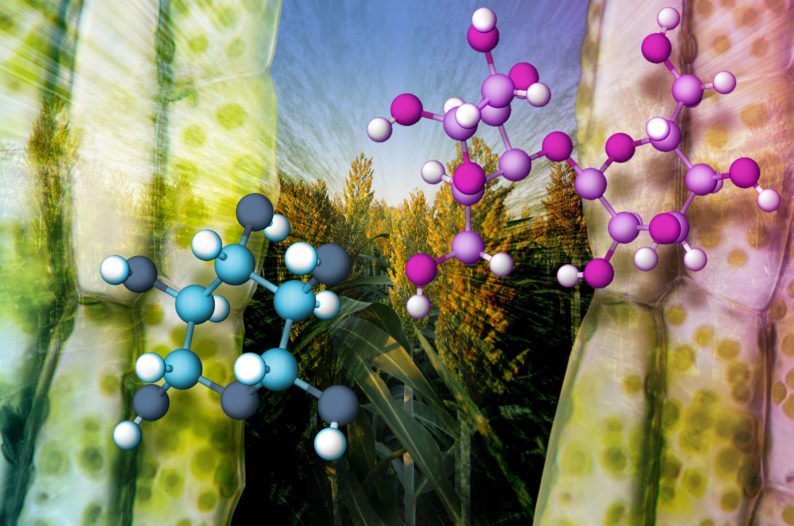Structural details of specific molecules and their interactions in sorghum grass cell walls suggests ways to ease deconstruction of this bioenergy crop.
The Science
Sorghum is a promising bioenergy crop. However, the thick secondary cell walls of the stems of this plant are difficult to break down into components that could become fuel. A multi-institutional team of scientists studied how two sugar-based components of secondary cell walls, xylan and cellulose, interact in this grass. Then they used structural information from multi-dimensional solid-state nuclear magnetic resonance (NMR) experiments to model the cell wall structure of sorghum. Predictive cell structure models could help identify the most stubborn components of bioenergy crops and inform ways to better deconstruct biomass.
The Impact
Details of molecular structure in the cell walls of bioenergy, forage, and food crops provide key information to help guide future genetic engineering approaches to redesign cell walls in these crops. Models of cell wall structure can help scientists identify molecular targets suitable for bioengineering to develop bioenergy crops that are easier to deconstruct.
Summary
In grasses, xylan is a linear cell wall polymer that is composed of multiple molecular groups such as acetyl and arabinose that run along its sugar backbone. The pattern of these molecular decorations is thought to influence the xylan conformation. An even pattern of substitutions creates xylan with a two-fold screw, or a full turn every two xylosyl units. Without this even pattern, xylan has a full turn every three units, forming a three-fold screw.
In dicots and softwoods, xylan tends to be in a two-fold screw conformation. However, the measurements in this study provide direct evidence for interactions between three-fold screw xylan and less ordered amorphous cellulose in grasses. The scientists grew sorghum with 13C-enriched tissue and examined its cell walls’ structural details at a molecular level using multi-dimensional solid-state NMR spectroscopy. They used the 850 MHz NMR at EMSL, the Environmental Molecular Sciences Laboratory, a U.S. DOE Office of Science user facility at Pacific Northwest National Laboratory. This work is part of EMSL’s Plant and Ecosystem Phenotyping Integrated Research Platform.
The structural details from these experiments reveal the functional role of highly substituted xylan in sorghum’s secondary cell wall architecture. Tuning xylan interactions by changing the molecular decorations could be a strategy to engineer and tailor sorghum for more efficient bioenergy production.
Contact
Jenny Mortimer, Lawrence Berkeley National Laboratory, [email protected]
Funding
This work was supported by the Department of Energy, Office of Science, Biological and Environmental Research program, and start-up funding from the University of California, Davis.
Publications
Y. Gao, et al., “A grass-specific cellulose–xylan interaction dominates in sorghum secondary cell walls.” Nature Communications 11, 6081 (2020). [DOI: 10.1038/s41467-020-19837-z]
This article was originally posted on the Environmental Molecular Sciences Laboratory news page.
